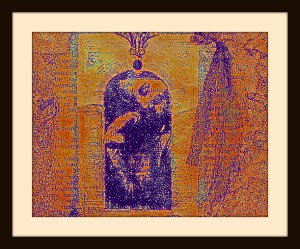In a sort of steroidal six-degrees-of-separation excercise, In Let the Great World Spin, Colum McCann spins a giant tale out of several disparate small tales. Sometimes the threads spin with a a leaden sense of doom, somtimes with a jolt of recognition and joy.
Set in the mid-70’s days of Vietnam, racial tension, and sexual revolution, Let the Great World Spin begins with a discomfiting scene at the World Trade Center twin towers. A tight-rope walker has inexplicably strung a wire between the twin towers and is performing a breathtaking balancing act, mid-air, in the exact spot that, years later, takes a punch in the gut from two airplanes.
Next we meet a young Irish man trying to make sense of the life his brother, Corrigan, has chosen to lead – the life of a priest whose only church exists under the freeway in the projects where his congregation – a group of hookers that include a mother and daughter team – ply their trade.
Next we meet Claire, a blue blood Park Avenue wife struggling with loosing her only son in Viet Nam. Through Claire, we meet Gloria, another grieving mother, but from the Bronx, a million miles from Park Place in the seventies. Gently unfolding fully developed characters, McCann gives us a judge, desperate for something, anything, meaningful in his life. He gives us a self-centered new-aged artist and the woman who is more than ready to walk away from him, given good enough reason — which she has after a monstrous car crash.
If any of these tales sounds comical, they are not. They are wry, ironic, and sharp. But not comic. There is no “I knew it all along” moment for the reader. McCann’s writing is delicate enough to avoid reeking of conicidence yet strong enough – like the tightrope- that each scene carries its own weight. In Let the Great World Spin, Colum McCann suspends relational definitions. People slide into common orbit through nothing more than grief. With nothing more than being in the wrong place at the wrong time, lives change. With nothing but shared awe at a speck prancing boldly in the sky, bonds forge. While familial relationships form the baseline bonds for most people, sometimes it is the encounter with a stranger that leads to the most important bonds.
The end of most books telegraph their arrival by dwindling pages and a sense of denouement. Even very great books can have unsatisfying conclusions. The best books leave the reader missing the characters. The ending of Let the Great World Spin took me by surprise. Literally, I must admit I was fooled by the inclusion of a readers’ guide in my edition. When I reached the last page of the last chapter, I expected to turn the page to a new chapter, but I didn’t. It’s not that the book ends abruptly – not in the way that disappoints a reader hungering for resolution. The abruptness is due instead, to the circular nature of the tale. I was engaged to the last word. Though I expected to read on, immediately I knew that the story ended right where it needed to end. The only way to survive loss is to keep moving. McCann’s story moves in a rich, full and expanding circle. Being a Nashvillian, I couldn’t help thinking, in the words of bluegrass musician Alvin Pleasant Carter, “Will the circle be unbroken, Lord, by and by, Lord, by and by.”

















